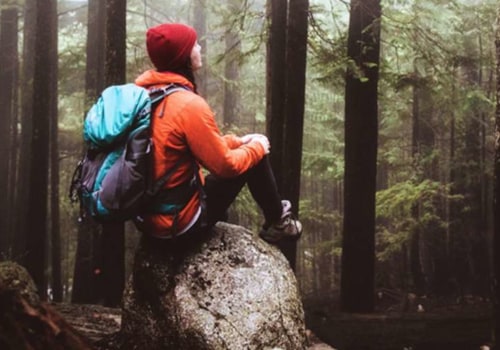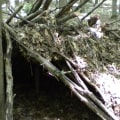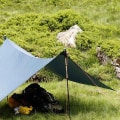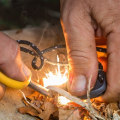?
Here are some basic skills to learn and master so that you are ready to face any situation.
Learning skills such as building and building is a great weekend project :-) you can do in the safety of your backyard.
Building
A can keep you warm, ward off predators, and provide heat for cooking. Fortunately, you don't have to be in a to learn what to do in a . To help you be confident in bad environments, I compiled tips and suggestions :-) from several of the most respected authorities, and compiled a list of 25 of the best .
The truth is that people land in situations all the time, and those who are prepared with the right tools, knowledge, and mental attitude are the best. Some of these tips will help you avoid situations altogether, while others can help you create an unexpected night out of a night where you thrive, rather than just surviving. Carry accelerants in your backpack in case you need to start a :-) in wet conditions. Products like Solkoa FastFire burn when wet and windy, and require very little heat to start up.
Lightweight, economical and easy to use, these small buckets are lifesavers if you need to build a to avoid hypothermia, create a signal or simply brew a restorative cup of coffee. Several come in a package, so stack some in your hunting backpack, fishing bag, glove compartment of your vehicle, and anywhere else you can think of, because you never know when the need for heat might arise. A 42 or 55 gallon contractor garbage bag is an indispensable, yet often overlooked, piece of equipment :-). The bags are very economical, weigh almost nothing and take up very little space in a package.
Bedding And Sleeping
In a , you can fill it with dry natural materials to form bedding, put it on the floor as a seat to keep pants dry, or make a moisture barrier for your bedding. Make a hole in the bottom and place it over your head and you have a makeshift waterproof jacket. You can carry more than one and also use it to collect as a perspiration bag, or as a simple cover to keep your :-) equipment dry. Wool is an excellent insulating material because it can withstand abuse.
Even when wet, it maintains approximately 60 percent heat retention efficiency. However, wool does not prevent the wind from passing through it. This will effectively cool you down. Primaloft and Primaloft Gold are excellent windproof polyester layers :-) that also insulate well when wet, retaining 85 to 90 percent of heat for .
Down is another great insulator, but it loses almost all of its insulating properties when wet or wet. Chris Harper, the owner of Skills2Survive, tells his Facebook and Instagram followers to hold on to worn 12-gauge shotgun shells because they make :-) big containers for small
tools. An empty shell can easily hold matches, tinder, fishing supplies, or a small first with antibiotic ointment and a pair of band-aids. They also make great candle holders for when your flashlight runs out of batteries or you need to start a .
Signalling
After all, you're asking for help and admitting that you can't do it alone. However, it's the set most likely to get you rescued. Modern technology can do a lot for us when we carry and use locator beacons :-) and even our mobile phone. There are a few other signaling tools that are not as "push-button" in operation and require practice.
Just one example is the use of a signal mirror. The beam of sunlight redirected from a mirror can be noticed up to 10 miles away, but it's quite a challenge to reach a target with that beam, even when it's a few hundred meters away. These skills require practice, and it's best to do it before you get into trouble (not while you're in trouble). As children, we all learned to tie our shoes.
Signage is unique among , giving you the means and ability to alert each and every potential rescuer that you need help. , flashing light, brightly colored markers, flags, mirrors and whistles can help them find you. Three triangular-shaped fires are a recognized distress signal.
Carefully aim your signal fires to prevent the surrounding area from igniting. Use normal signal mirrors only when you can see an airplane or people in the distance. Use an emergency strobe light at night to help attract the attention of :-) people who may be in the area. Make smoky with organic material over the during the day to attract attention.
Design ground messages to the air signal in an open field, S, O, S. From rocks, logs or colored clothing, whatever is seen against the background. Most search and rescue groups use airplanes as their primary method of observation. If you need a cutting edge, choose a piece of flint, chert, obsidian or similar rock.
Looking For
Unfortunately, the outdoors doesn't have a 24-hour Starbucks or McDonald's. So you need to understand what it takes to build fishing and hunting traps to catch local wildlife. Especially for the situation where you can choose to practice on purpose for an extended period of time, naturalistic knowledge is :-) absolutely invaluable. Even if you only have a basic understanding of how compasses work, you should have one with your camping, hunting, hiking, or emergency equipment.
Finding reliable and is a that people relied on daily to survive and that has since been forgotten. These tips include useful tricks for family farming and vital knowledge for real-world hunting and fishing emergencies. Todd Walker, also known as Sherpa, knows that there are scenarios in which time is a factor in determining if :-) someone lives or dies. Not everyone can master all skills, so it's important to have a group of trustworthy people with a wide range of skills.
Select a piece with an angled corner and take a sturdy lemon-shaped stone to use as a hammer. Hit the flint at a low angle with the hammerstone, removing rock chips to produce a thin, extremely sharp blade. Experiment with several stones for best results. You can create arrowheads or a leaf, and use pine tar glue.
If you come across a dull blade and have no way to sharpen it, start looking for a fine-grained round stone in a local waterway. Select one with a smooth section that looks similar in texture to that of a commercial whetstone. Dampen the stone and sharpen your knife with small circular strokes. Apply equal strokes to each side of the blade to even out the sharpness.
For a 4-inch blade, I usually run 30 circles on each side. Try to match the angle of the cutting edge of your knife as best you can and rinse the stone often to keep its surface porous. Once you feel you've sharpened enough, examine the blade, remove the burrs, and polish the edge by rubbing the blade against a leather belt or trunk (or even your pants, if you're careful). Try the edge with a small :-) carving or slicing task.
Repeat the sharpening and sharpening process until you are satisfied.
Identifying Edible Plants
There's no need to go after big game in a , and chances are you'll waste energy in a fruitless attempt to bring them down
and are vital to your . Ration your sweat, not your intake. You can live up to three days without .
Identifying Edible Plants There's no need to go after big game in a , and :-) chances are you'll waste energy in a fruitless attempt to bring them down
You might be surprised to see so low on the skills priorities list, though we can survive for much longer without it as compared with and .
Knot Tying
Knots aren't just for hastily tied shoes and packages; when properly learned and executed, they can help secure hunting traps, fishing line, bandages, shelters, and will play a role in just about every other on this list. Whenever you plan to go outdoors for an extended period of time, it's always good to have one or two skills practiced up your sleeve, you never know when you're going :-) to need them. Imagine for a moment that you are thrust into an unexpected and that you need to trust the people in your group for a successful outcome. Now imagine that the people in that group are all instructors, authors, and similar experts in the field.
However, for a massive segment of the population, knot-tying skills stopped there. There are so many interesting and useful knots that we could all master. To be fair, the average daily work no longer requires much of a knot, but I would still consider :-) this a knowledge gap. In addition to the overhead knot, which most people know, only a few other knots can serve us well in many situations.
The square knot, the fold of the sheet and the arch line are closures that I use very often. Two half hitches and the taut line hitch are also in heavy rotation for me. It has been estimated that there are between 3,500 and 5,000 knots, but :-) start with the knots I mentioned. As humans, we have to eat in order to live.
Relearning these skills is essential for anyone interested in spending time outdoors, as any situation can turn into a and having these skills can save your life. After finding suitable , the ability to make is one of the most important and useful skills anyone can develop in an
First Aid Skills
Understanding and being able to administer may save your life or the life of someone you love. Grab a friend, partner, or family member and practice administering first aid for a series of common threats in situations.
The most important element is to keep your brain functioning rationally, this is for . Analyze your needs before every trip, create a medical checklist, and carry a small personal kit with you at all times
Use yellow covers if possible and cover the open end with reflective tape to make small covers easier to spot on the ground or in the beam of a flashlight. Harper is also a paramedic and recommends wearing adhesive :-) tape along with dressing material to treat small wounds. Like many other equipment, Harper says he wears adhesive tape because it serves more than one purpose. You can use it to start a , repair equipment, mark a trail, cover a blister, or sew up a wound with a butterfly stitch.
Adhesive tape, along with parachute rope or bench rope, is an excellent combination for tackling various situations. For other uses of wrapping tape, refer to tip No. Recognize that cotton is not a good choice for clothing in :-) cold climates, but it is a great option for several other situations. Cotton absorbs blood well and can be easily used to slowly dispense medicinal liquids.
For example, MacWelch shows his students how to fill a cotton ball or gauze with antibiotic ointment and place it on an affected spot and secure it with adhesive tape so that the wound stays clean and receives constant treatment to prevent infection. You can also soak cotton balls in petroleum jelly and use one or two later to start a . If you need something to store your oil balls, remember the tip No. Worn out shotgun cartridges make excellent containers.
Do Not Panic
Remain calm, and do what you have to do to take care of yourself. STOP means :-) Sit, Think, Observe, and Plan. It is the most intelligent thing you can do in life threatening situation.
Your attitude determines how successful you are in a . This first of the skills might even determine whether you live or die!
Keep a positive mindset and remember that every little thing you learn, :-) every you improve upon, every bottle of you stockpile will increase your chances of . Even if just by a little bit.







Leave Reply